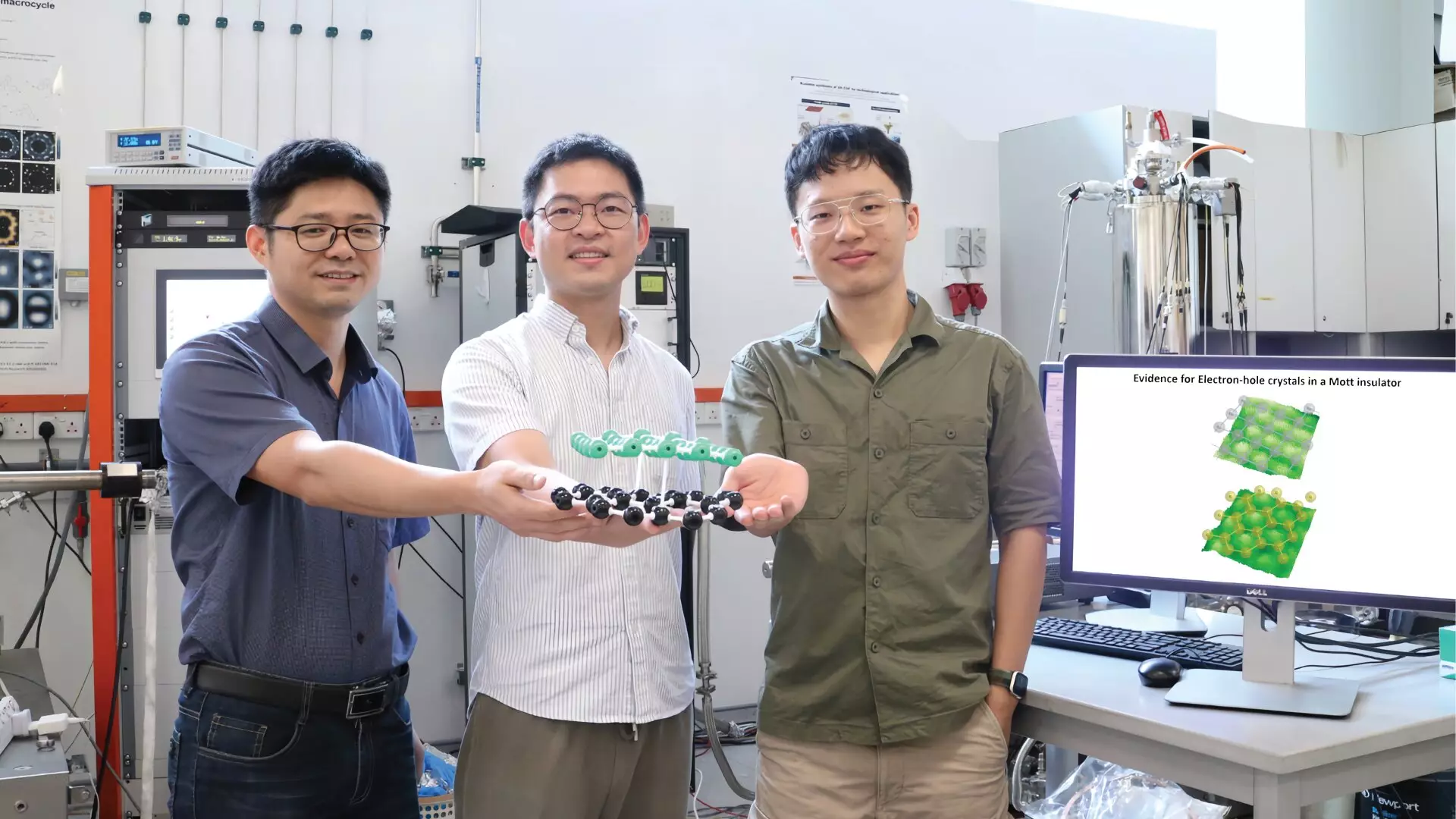In the diverse realm of solid-state physics, the interplay between electrons and their simultaneous counterparts, holes, has often captivated researchers. When a specific balance is struck—where the density of electrons essentially matches that of lattice sites in a material—a phenomenon known as electron crystallization occurs. This transformative process allows these elusive particles to interact strongly, forming what are termed electron-hole crystals. The implications of this behavior are vast and profound, enticing scientists towards potential breakthroughs in quantum technology and computing applications. However, the journey to capturing and employing these interactions has proven to be a challenging endeavor.
The Dance of Electrons and Holes: A Quantum Perspective
In the context of quantum mechanics, the idea of counterflow superfluidity emerges as an exhilarating consequence of the cohabitation of electrons and holes. This particular state allows electrons and holes to flow in opposite directions without succumbing to the usual drag of energy dissipation. While this concept might seem fantastical, it lays the groundwork for a wealth of quantum states that extend beyond conventional materials. The allure of simultaneously having electrons and holes working in tandem highlights an indirect pathway towards future computing paradigms, potentially redefining energy efficiency in quantum computing.
Yet, herein lies the paradox: maintaining the stability of electron-hole crystals poses significant challenges. The natural propensity of electrons and holes to recombine can thwart experimental endeavors, complicating the task of realizing their collective behaviors in a singular physical frame. Traditional strategies have involved layering separate hosts for electrons and holes, but these methods typically fall short of demonstrating these unique states in integrated natural materials. This gap has prompted scientists to persist in their quest for innovative solutions that could envelop electrons and holes within a singular system.
An Innovative Breakthrough: Electron-Hole Crystals in Mott Insulators
Against this backdrop of scientific pursuit, a team from the National University of Singapore (NUS) has recently achieved a milestone—creating and observing electron-hole crystals in a compelling class of materials known as Mott insulators, specifically using Alpha-ruthenium(III) chloride (α-RuCl3). This groundbreaking discovery, led by Associate Professor Lu Jiong and Professor Kostya S. Novoselov, has shed light on the potential of exploring quantum excitonic states enabled by these alternating particles. Their findings herald new opportunities for next-generation computing technologies, including the tantalizing prospects of in-memory computing and advanced quantum systems.
Published in the esteemed journal *Nature Materials*, the research harnesses a revolutionary technique known as scanning tunneling microscopy (STM). This powerful method operates through quantum tunneling, allowing for the capture of real-space images of materials at atomic resolutions. However, conventional STM techniques have often been constrained to study conductive materials. The challenge was to utilize STM within an insulating substrate. The ingenious approach taken by the research team was to overlay the Mott insulator with graphene, a remarkably thin conductive film consisting of a single layer of carbon atoms. This methodological innovation not only reveals the unique electronic structures of the Mott insulator beneath but also provides an adjustable source of electrons that allows for fine-tuning of the α-RuCl3 properties.
Motion Under Control: A New Frontier in Quantum Materials
The results from the STM investigations uncovered two distinct ordered patterns correlating with different energy levels associated with α-RuCl3. Named the lower and upper Hubbard bands, these patterns exhibited unique periodicities and symmetries, a testament to the complex and rich nature of electron-hole interactions. By skillfully manipulating carrier densities through electrostatic gating, the researchers visualized the dynamic transitions between these orderings. This direct visualization elucidates the crystalline formations of electrons and holes within the Mott insulator, dramatically advancing our comprehension of their operational frameworks.
Astoundingly, the emergence of two separate ordered states simultaneously was not expected, demonstrating a crucial intersection of theoretical prediction and empirical observation. As Associate Professor Lu Jiong opined, the existence of these electron-hole crystals amidst the fabric of coexisting electrons and holes offers deeper insights into their structural symmetry and distribution. Such discoveries pave the way for novel techniques in controlling these quantum states using electrical signals, potentially revolutionizing the field of materials science.
Implications for the Future of Quantum Computing
The ramifications of this research extend far beyond academic curiosity. As the quest for efficient computing accelerates, the ability to control electron-hole crystals could yield unprecedented developments in materials that swiftly transition between varying states—a quality highly sought after in the pursuit of quantum computers. They may become essential for creating materials capable of simulating quantum physical phenomena efficiently, igniting a new wave of technological advancement.
In essence, the investigation into electron-hole crystals within Mott insulators is more than a scientific inquiry; it signifies the dawn of an era where the quantum universe and cutting-edge technology converge. This groundbreaking work not only enriches our understanding of fundamental physics but also ignites the potential for practical applications that could transform computing technology as we know it.

